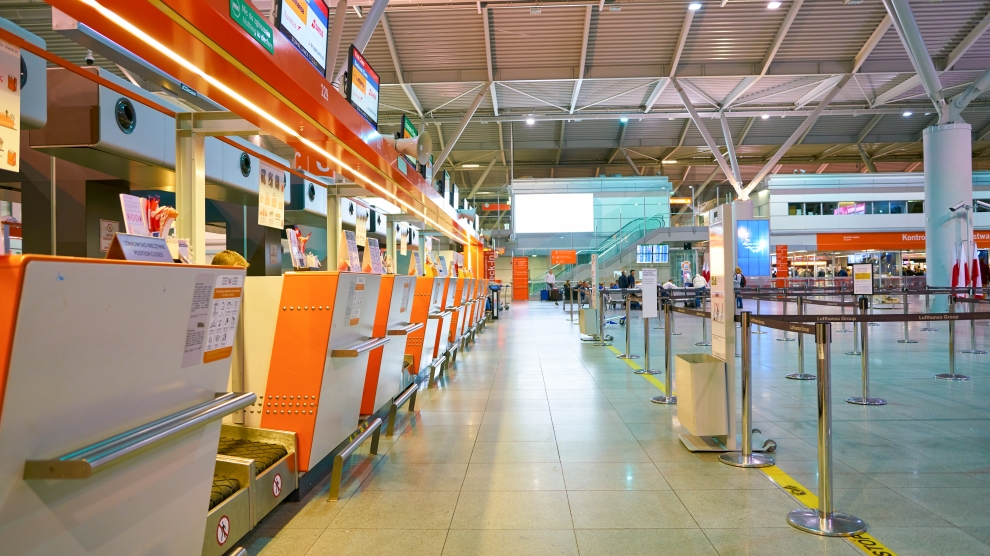It’s drizzling when I arrive at Poland’s biggest and busiest airport on a Saturday morning, on my way back home following my first business trip since the Covid-19 lockdown was first introduced in March. I still have about one and a half hours until my flight, but the rain encourages me to accelerate my pace and enter the terminal building.
With boarding pass in hand – I need to present it at the entrance – I head straight to security control. I zigzag to reach one of the belts. I start looking around and soon realise that there are no other passengers. The staff look a little lazy, moving almost in slow motion. They notice me approaching and suddenly come back to life. The whole screening process takes less than two minutes and then they’re back in standby mode.
I pass just a couple of people before I spot a screen with the day’s departures. Seven flights are listed. Not that hard to find mine this time, I think to myself. I look around for a place to kill the time that’s left before boarding. I seem to be luckier than a few days ago. There are a few cafés and restaurants open. I realise it must be the time of the day. I took an evening flight from London Stansted where the only shop open was a WH Smith and an airport that boasted in 2017 about handling 100 million passengers within four years was, it felt, completely deserted.
I sit down in a café close to my gate, not that I was afraid I would not make it there on time. It just looked like a nice place. This table has just been disinfected, says a small piece of paper. I order a soya flat white while still wearing my facemask. I look around and the only other customer is a middle-aged man sipping a pint, some five tables away. Overwhelming quietness. Business must be difficult as even the souvenir shop is shut.
I suddenly remember the craze I oftentimes experienced, arriving at dawn, swapping aircraft and terminals at Frankfurt within 40 minutes, taking two flights to travel between neighbouring countries in emerging Europe, layovers… And then, everything stopped. My trips to Georgia and then to Nice via Tel Aviv, another one to Seoul, yet another to Las Vegas, all cancelled.
Realising that I am travelling again I head to the gate after more than a half hour in the café. I see only a handful of passengers there. Boarding starts a few minutes later. With priority boarding I am one of the first passengers to get on the bus taking us to the aircraft. My seat is 39E. A middle seat. Not a fan.
Boarding completed, I hear a few minutes after I have taken my seat. Sixty, says one air hostess to another as they pass by. The aircraft is a new Airbus a321NEO with 239 seats. I don’t have a problem with my middle seat either. There’s no one in rows 38, 39 or 40. I can sit back, relax, and enjoy the flight. But do I?
Dozens of questions suddenly pop up in my head: does it make sense to fly 60 people? Is it economically viable? What about the environment, air pollution and our carbon footprint? Shouldn’t I have stayed home? With the pandemic not having turned the corner yet, when will I next fly? What about all the restrictions, constant changes in travel advice, quarantine? How to pair that with my longing for travel?
In a podcast I recorded two months ago, Mark Baker, a freelance journalist and travel writer, told me that travel in 2022-2023 should look pretty much like 2019. It will just be more sustainable.
Can’t wait!
—
Unlike many news and information platforms, Emerging Europe is free to read, and always will be. There is no paywall here. We are independent, not affiliated with nor representing any political party or business organisation. We want the very best for emerging Europe, nothing more, nothing less. Your support will help us continue to spread the word about this amazing region.
You can contribute here. Thank you.


Add Comment